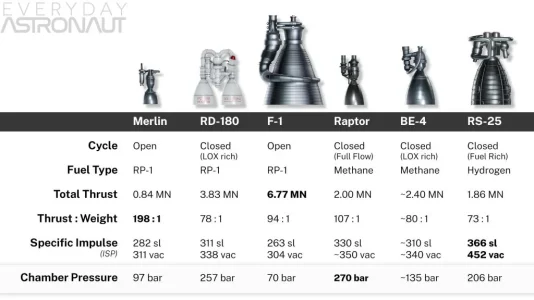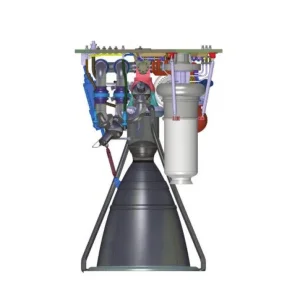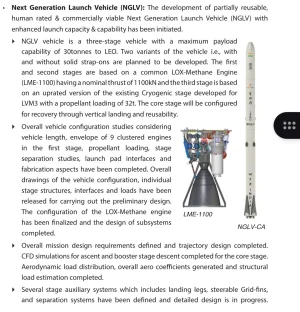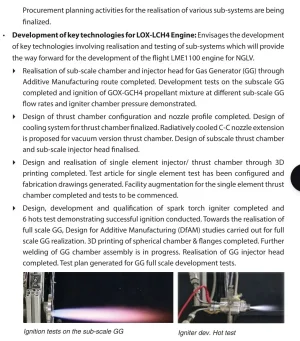- Joined
- Jul 5, 2024
- Messages
- 689
- Likes
- 3,183
V2 version stage 3 is methalox,but propellant loading is 50tonsComparison, took it from Strategic frontier forum.View attachment 11574
The data here is all messed up & wrong, and frankly very outdated to be honest not to mention no proper sources are mentioned to back up those numbers, for example Maximum payload to LEO of NGLV v4 (baseline NGLV) is 20 tons and not 30, 30 tons is the payload of NGLV-H with solid rocket boosters, also 1094 tons is the weight of NGLV-H and not the baseline NGLV (reason being 1094 tons is the weight of the variant capable of transferring 30 tons to LEO as seen here.Comparison, took it from Strategic frontier forum.View attachment 11574
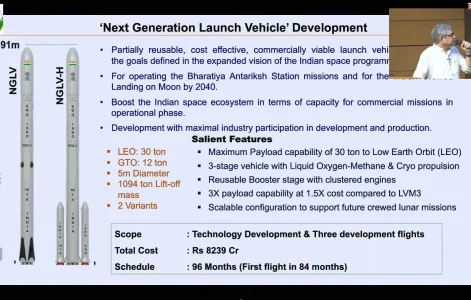
Actually these payload estimates are conservative figures, actual should be more, ISRO never gives the actual values, they only give conservative numbersThe data here is all messed up & wrong, and frankly very outdated to be honest not to mention no proper sources are mentioned to back up those numbers, for example Maximum payload to LEO of NGLV v4 (baseline NGLV) is 20 tons and not 30, 30 tons is the payload of NGLV-H with solid rocket boosters, also 1094 tons is the weight of NGLV-H and not the baseline NGLV (reason being 1094 tons is the weight of the variant capable of transferring 30 tons to LEO as seen here.
View attachment 11577
But we know that NGLV-H is the 30 ton capable variant and not the baseline NGLV
(For more source check my previous posts in the thread)
I am also expecting the payload capacity to increase as ISRO further refines and fine-tunes it's LME 110 engines as so far the numbers being thrown around are purely based on the data from the sub scale LME 20 engine (based on CE 20) ISRO had tested earlierActually these payload estimates are conservative figures, actual should be more, ISRO never gives the actual values, they only give conservative numbers
I am also expecting the payload capacity to increase as ISRO further refines and fine-tunes it's LME 110 engines as so far the numbers being thrown around are purely based on the data from the sub scale LME 20 engine (based on CE 20) ISRO had tested earlier
View: https://x.com/Varun55484761/status/1658417835658600450
As they advance to the full scale engine and fine-tune that I expect the figures to get a lot better.
I am expecting NGLV to reach atleast 22 tons to LEO and 10 tons to GTO
similarly I am expecting NGLV-H to reach 35 tons to LEO and 15 ton to GTO due to both a more efficient LME 110 and our ability to now make better and more powerful SRBs thanks to DRDO's advancements in this field (like composite casings)
View: https://youtu.be/Yc6C8Sz9ySw?si=ljcdurWV8xHSLeud
Chief is saying 110 ton thrust will be minimum plus he is saying movement of propellant is important that's why that SCE-200 test without nozzle.
One time he just addressed him by name directly.I think here interviewer must be more polite & use 'Sir; while asking questions. His voice shows some reflection of arrogance.
Anyway good info.
Thats my thinking. No doubt, information we got its bestOne time he just addressed him by name directly.
But nonetheless this is one of the best interview with Somnath sir.
Sorry but the raptor 3 is like 100 times way better and more advanced than the LM-1100. For starters Raptor is full flow staged closed combustion cycle while LM-1100 is open gas generator cycle which means Raptor is way more efficient than LM-1100. Not only that it only weighs 1500-1600 kgs and can produce thrust nearly 3MN whereas LM-1100 weighs 1100 kgs and produce thrust just 40-45% or Raptor 3 thrust indicating that Raptor is way more efficient pound for pound and more powerful pound for pound. Even BE-4 engine is better than LM-1100. By the way it’s not a knock on LM-1100. It’s still an impressive engine but it goes to show how far we are behind the Americans. China is also working on full flow staged closed combustion cycle engines too.
